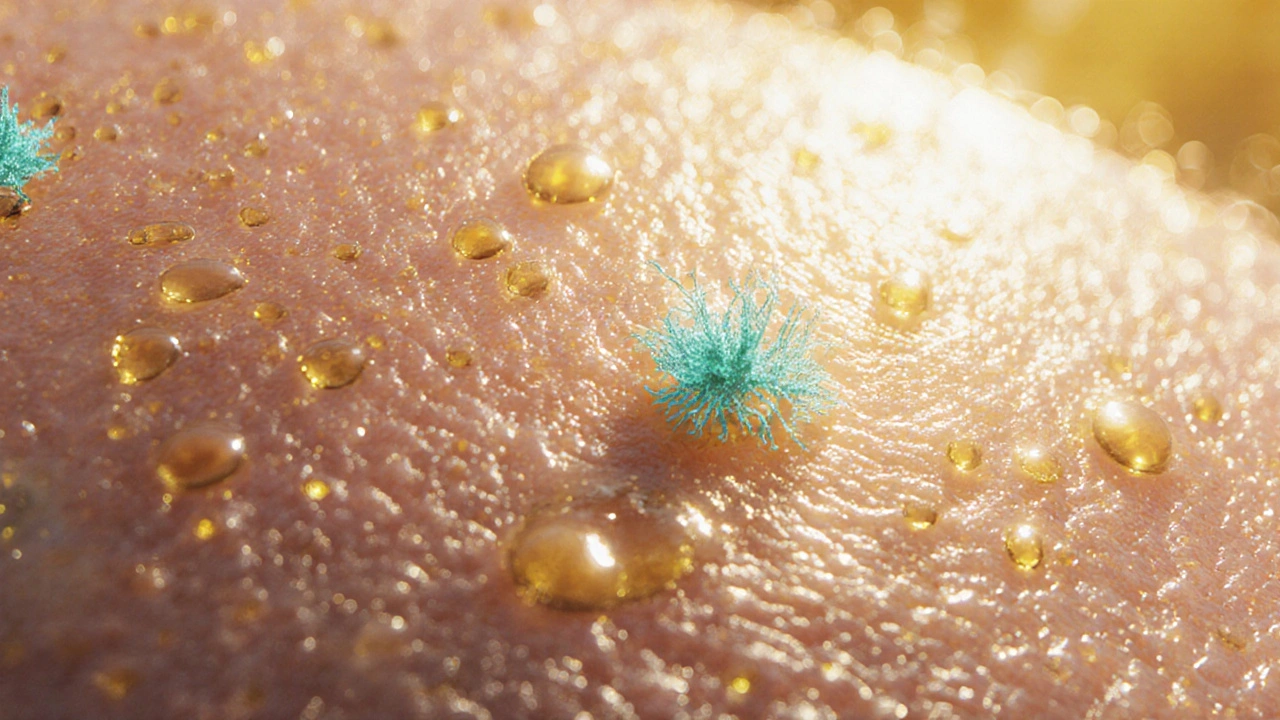Skin Fungus: Causes, Symptoms, Treatment & Prevention
When dealing with skin fungus, a collection of fungal infections that affect the outer layers of the skin, hair, or nails. Also known as cutaneous mycosis, it often appears as itchy rings, flaky patches, or discolored nails. The main culprits are dermatophytes, fungi that thrive on keratin, the protein that makes up skin, hair, and nails. Tinea, the medical term for the many forms of dermatophyte infection, includes familiar names like athlete’s foot, jock itch, and ringworm. Antifungal medication, whether applied topically or taken orally, is the primary weapon against these organisms. Understanding how skin fungus spreads—from damp locker rooms to shared towels—helps you break the cycle before it starts.
How to Spot and Treat Skin Fungus Quickly
Most people notice the problem when a red, scaly circle shows up on the body or the feet become itchy and cracked. Those early signs are the body’s alarm that a dermatophyte has taken hold. A quick visual check, sometimes followed by a skin‑scraping test, confirms the diagnosis. Once confirmed, skin fungus treatment follows a clear sequence: clean the area, apply an over‑the‑counter antifungal cream, and, for stubborn cases, move to prescription‑strength options like terbinafine or itraconazole. The choice of medication depends on the infection’s location—creams work well for ringworm and athlete’s foot, while oral pills are needed for nail involvement or deep scalp infections. Alongside medication, simple hygiene steps—drying feet thoroughly, avoiding tight shoes, and not sharing personal items—cut down the chance of reinfection. For people with weakened immune systems, doctors may recommend longer courses or preventive antifungal use to keep the fungus at bay.
Beyond treatment, it’s useful to know how skin fungus relates to other fungal issues. For example, Candida species cause candidemia, a serious bloodstream infection, but they can also trigger skin‑linked yeast infections that feel similar to dermatophyte outbreaks. Knowing the difference matters because the medicines vary: azoles target yeasts, while terbinafine hits dermatophytes. Lifestyle tweaks—wearing breathable fabrics, keeping skin clean after workouts, and using antifungal powders in shoes—reduce the environment that fuels growth. Misconceptions abound; many think that a single bout of ringworm means a lifelong problem, but with proper care the infection usually clears in a few weeks. Keeping an eye on the skin’s health, using the right antifungal medication when needed, and staying consistent with preventive habits will keep skin fungus from crashing your routine.
Below you’ll find a curated set of articles that dive deeper into specific skin‑fungus topics, from choosing the right OTC cream to understanding when to see a dermatologist. Whether you’re dealing with a mild patch or a stubborn nail infection, the collection gives you practical steps you can apply right away.

How Sun Exposure Triggers Tinea Versicolor - Causes, Symptoms & Prevention
Harrison Greywell Oct, 2 2025 12Explore how sun exposure fuels tinea versicolor, its symptoms, prevention tips, treatment options, and when to see a dermatologist-all in plain language.
More Detail